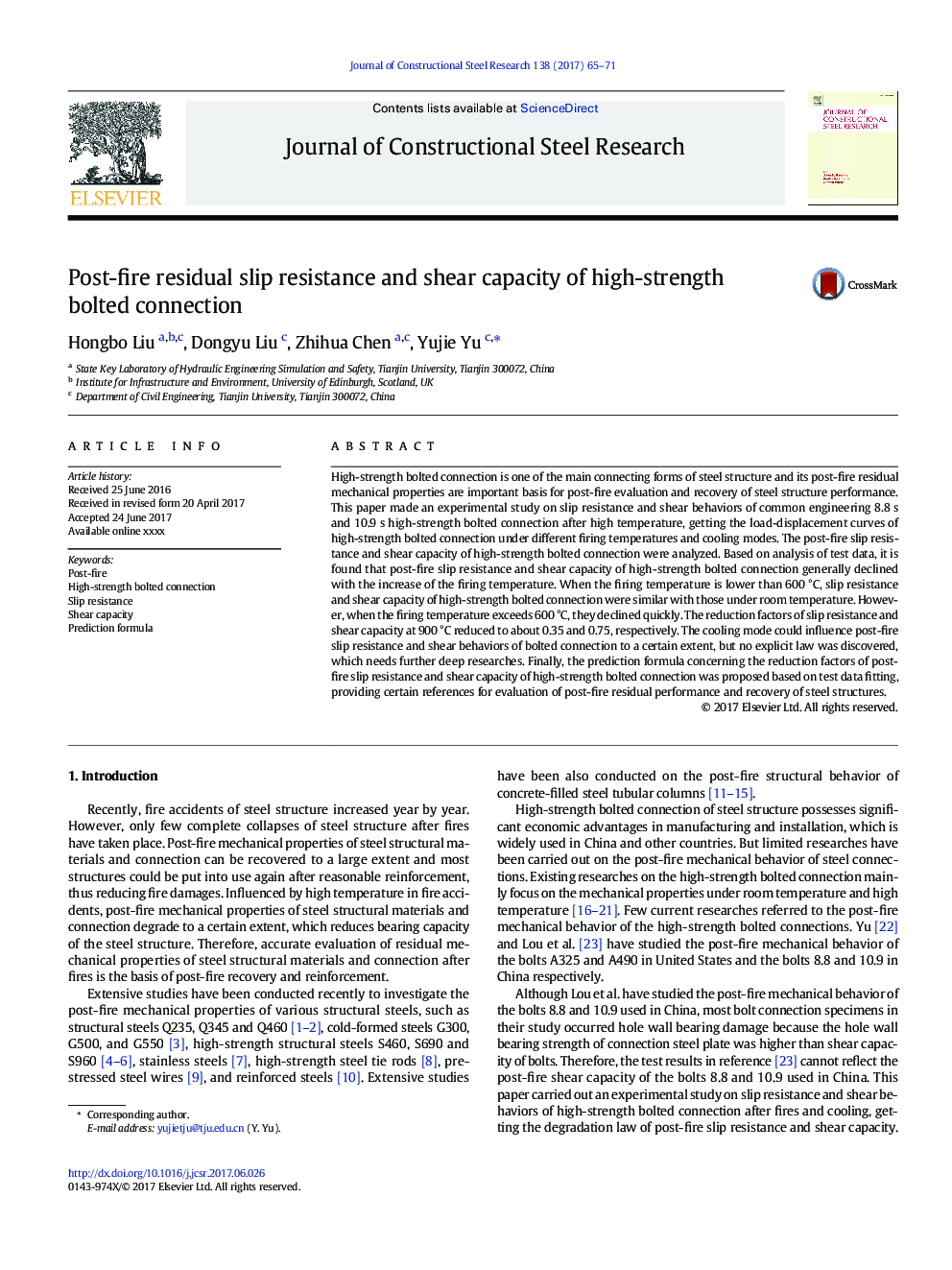| Article ID | Journal | Published Year | Pages | File Type |
|---|---|---|---|---|
| 4923301 | Journal of Constructional Steel Research | 2017 | 7 Pages |
Abstract
High-strength bolted connection is one of the main connecting forms of steel structure and its post-fire residual mechanical properties are important basis for post-fire evaluation and recovery of steel structure performance. This paper made an experimental study on slip resistance and shear behaviors of common engineering 8.8 s and 10.9 s high-strength bolted connection after high temperature, getting the load-displacement curves of high-strength bolted connection under different firing temperatures and cooling modes. The post-fire slip resistance and shear capacity of high-strength bolted connection were analyzed. Based on analysis of test data, it is found that post-fire slip resistance and shear capacity of high-strength bolted connection generally declined with the increase of the firing temperature. When the firing temperature is lower than 600 °C, slip resistance and shear capacity of high-strength bolted connection were similar with those under room temperature. However, when the firing temperature exceeds 600 °C, they declined quickly. The reduction factors of slip resistance and shear capacity at 900 °C reduced to about 0.35 and 0.75, respectively. The cooling mode could influence post-fire slip resistance and shear behaviors of bolted connection to a certain extent, but no explicit law was discovered, which needs further deep researches. Finally, the prediction formula concerning the reduction factors of post-fire slip resistance and shear capacity of high-strength bolted connection was proposed based on test data fitting, providing certain references for evaluation of post-fire residual performance and recovery of steel structures.
Related Topics
Physical Sciences and Engineering
Engineering
Civil and Structural Engineering
Authors
Hongbo Liu, Dongyu Liu, Zhihua Chen, Yujie Yu,
